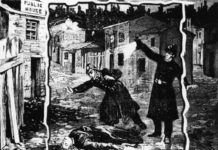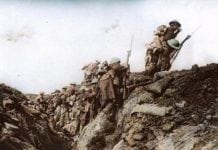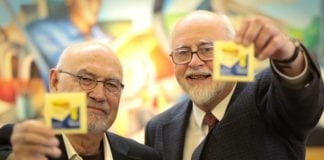During the 19th century, as the Industrial Revolution began to reshape Europe & America, there emerged a new and powerful type of businessman, evolving from the Neanderthal and brutish mill and plantation owners of the previous century.
The modern barons were smooth, sophisticated, but no less ambitious and single-minded as their predecessor.
Real estate, railroads, steel, construction and even fencing became the product of the rich and powerful.
But the biggest of them all, crude oil, was yet to take its place amongst the elite industries by the time the century reached the halfway mark. However, that was to change, and very quickly indeed.
In around 1845 an American businessman, and inventor, Samuel Martin Kier (1813 –1874) noticed that his salt wells were becoming contaminated by an oily substance that was seeping from the rock as his men drilled for the valuable condiment and preservative.
To begin with he ordered his workers to dump the offending mess into a nearby canal but when one of the pools ignited Kier immediately saw a potential use for the ‘rock-oil’ as he named his discovery.
To Kier, it was simple. The primary fuel used in all lamps across America until that point had been whale blubber, an expensive and limited resource and so Kier employed chemists to experiment with his new discovery.
By 1848 he had renamed his product Seneca Oil and was selling it as a skin ointment, but it proved to be unpopular and therefore unsuccessful.
A second attempt turned out to receive only a slightly better reception but his ‘petroleum jelly’ product was soon being shipped across America as it grew in popularity. You have used it too, dear reader, as these days that exact same product is called Vaseline.
If you have ever wondered why the label bears the words ‘petroleum jelly,’ well then now you know.
Despite this, Kier remained focused on the idea that the rock oil burned slowly and he saw it as a way to replace the increasingly expensive whale oil.
By 1851 Kier had built a refinery and was producing safe, new oil lamps for the mining industry, although with only moderate success.
At that time, with limited resources of seeping rock oil, Kier seemed to have become bored with the idea, to the point where he even failed to register any patents for his new products.
However, in 1857 two of his executives George Bissell and Jonathan Eveleth heard of a rock oil pool that had formed close to the town of Titisville in Pennsylvania and were sent to investigate.
There, in their hotel, they encountered Edwin L Drake (1819 – 1880) a retired railroad conductor who had settled in the town with his family.
Impressed by their new acquaintance Bissell and Eveleth employed Drake, largely on the strength of his free rail-road travel pass, to tour the country investigating other rock oil pools.
By then, they knew there was a market for the product, if only there was enough of it to be found.
In the spring of 1858 Drake travelled to what is now known as Oil Creek, which at the time was only a forty-five mile tributary of the Allegheny River between Crawford and Allegheny Counties in Pennsylvania.
It was an area that had been drilled before; only salt and fresh water had then been the objective.
When rock oil appeared nobody really knew what to do with it and so they moved on to new locations.
However, having investigated the region and making the sort of geological survey only a retired railroad ticket collector could make, Drake decided to adopt the salt well drillers technique of using a steam engine powered drill for the oil he was convinced lay beneath the surface.
This decision led to one of the most famous quotations the oil industry has ever recorded when the foreman of the first team he tried to engage said to him;
‘Drill for oil? You mean drill into the ground and try to find oil. You’re crazy.’ It was exactly the sort of thing drillers had been trying to avoid until then and so the foreman packed up his equipment and left.
A new team was eventually assembled and in the summer of 1859 drilling began but they soon encountered issues with the loose gravel surface that kept collapsing and stalling the drill bit.
Drake overcame the problem by driving a cast iron pipe into the ground along with the drill, preventing further collapses and water penetration. Even so progress was painfully slow at a rate of only three feet per day.
The drilling team began to lose motivation, crowds of onlookers gathered to jeer at what had, by then, been nicknamed ‘Drake’s Folly,’ and, incredibly, the Seneca Oil Company abandoned the project, leaving Drake to his own devices.
Funding soon ran out but, with the help and generosity of others, Drake persevered until August 27 1859 when the drill bit reached a depth of seventy feet and hit a crevice.
Once again, the team packed up for the day but when the chief engineer, Billy Smith, arrived for work the following morning he was amazed to see the rock oil slowly rising up through the shaft. It was quickly hand pumped into an old bath tub and the date is forever commemorated as the day the ‘crazy man first struck oil.’
The following morning other prospectors were using Drake’s method of drilling inside a pipe, to prevent collapse, (a method still used by drillers to this day).
To begin with Drake was producing forty-five barrels of oil a day, all of which was sent to Samuel Kier’s refinery and then sold as lamp oil throughout the United States.
Within a decade sixteen thousand barrels a day were being refined and Drake was being honoured as the father of the modern oil industry.
However, his business acumen failed to match his inventive enthusiasm and, having failed to patent his drilling invention and losing all the money he made with poorly judged investments, by 1863 Drake and his family had become impoverished and almost destitute.
More Awesome Inventions by Albert Jack
Finally, in 1872, the State of Pennsylvania awarded the old man an annual income of $1500 in recognition of the ‘crazy man whose determination founded the oil industry.’
And he was a man without whom the business barons who followed in the shape of Henry T Ford, J.D Rockefeller and subsequently most of Texas, and for that matter the Middle East, would never have enjoyed the great power and wealth Edwin L Drake initiated when all around him had given up on the idea of finding, or using, rock oil.
In fact, without Drake, the world’s entire oil and petroleum industry might well have been limited to little pots of Vaseline. And whales may have become extinct too.
For his part, Drake died on November 9, 1880 in Bethlehem, Pennsylvania and is buried with his wife at Titisville alongside a fine memorial built to honour his memory. – Albert Jack
Albert Jack AUDIOBOOKS available for download here
More Awesome Inventions with Albert Jack






































